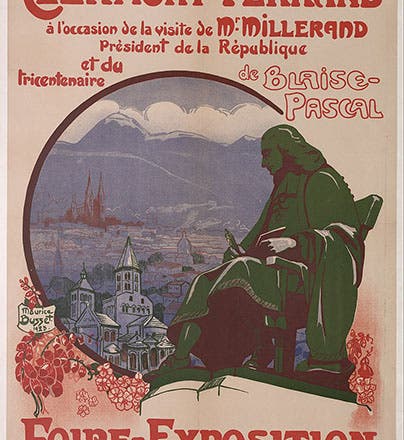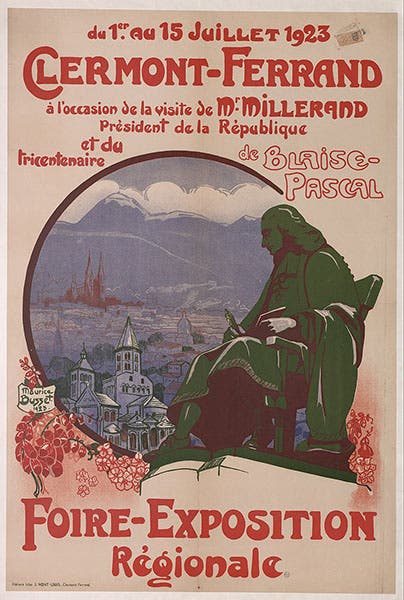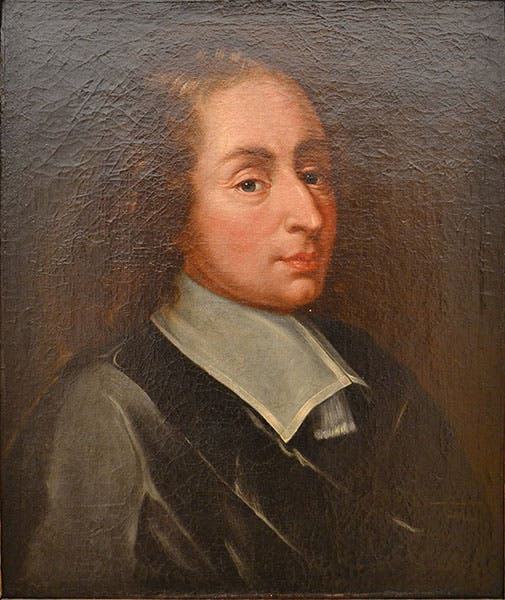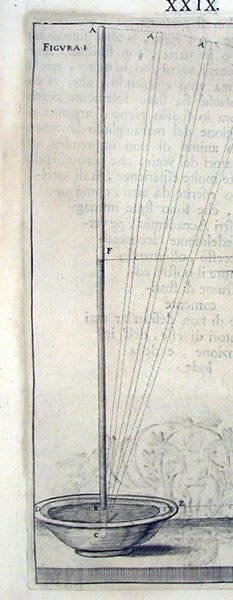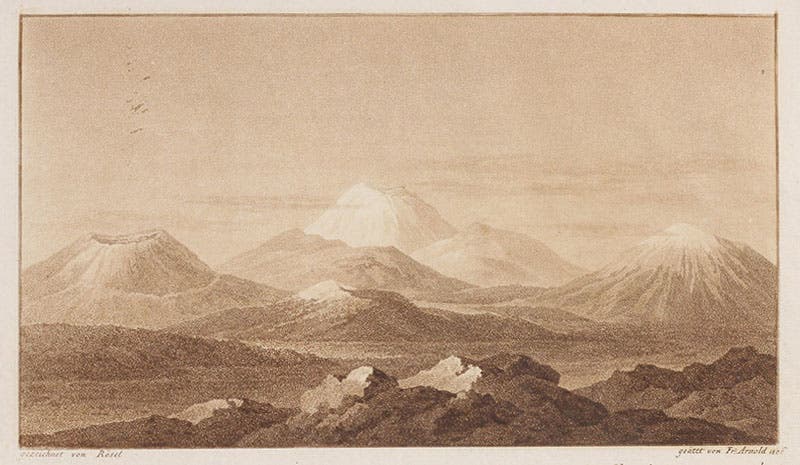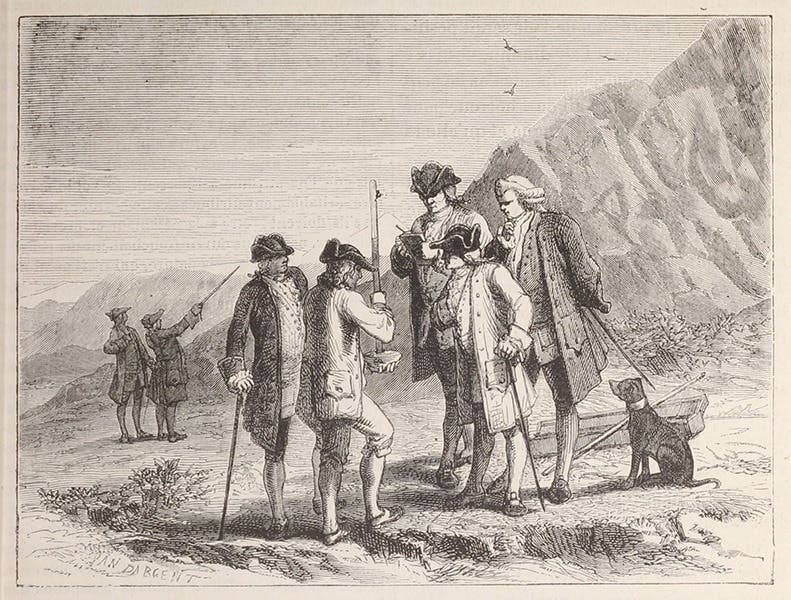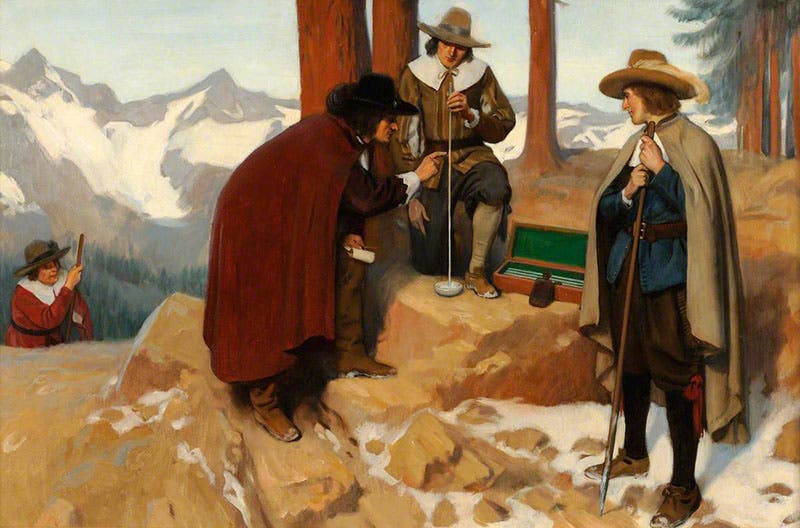Scientist of the Day - Florin Périer
On Sept. 19, 1648, one of the most celebrated experiments of the entire 17th century got underway. Often called the Puy de Dôme experiment, after the mountain in central France that hosted the experiment, it was the brainchild of Blaise Pascal, then in Paris, and was performed by his brother-in-law, Florin Périer, married to Pascal’s older sister, Gilberte. We have lots of portraits of Pascal, but none of Périer. Here is the background of the experiment, and how it played out.
In 1644, the Italian disciple of Galileo, Evangelista Torricelli, discovered an unexpected phenomenon. He filled a glass tube, some three feet long and closed at one end, with mercury, and then inverted the tube into a bowl, also filled with mercury. The mercury ran out of the tube down to the level of about 30", and then stopped, and held firm. Two questions occurred to Torricelli, and his colleagues: what keeps the 30" of mercury up in the tube, and what is in the now-empty space at the top (the closed end) of the tube? Torricelli thought the mercury might be held up by the pressure of the atmosphere on the surface of the bowl of mercury, and he thought that the empty space might be a vacuum, truly emptied of all matter. Those might be natural conjectures at later times, but in 1644, it was generally understood that air has no weight, that the atmosphere exerts no pressure, and that nature abhors a vacuum. We offer an engraving of a Torricellian tube, from the Saggi (1667) of the Cimento Academy in Florence (third image).
Pascal heard about the Torricellian tube experiment in 1646, probably informed by Father Mersenne, who had exceptional listening ears, and Pascal repeated the experiments, confirmed that the phenomenon occurred just as Torricelli described it, and tended to agree with Torricelli’s explanation. But he went further. He reasoned that if the height of the air was such as to balance a column of mercury some 30 inches high, then if there were less atmosphere, the level of mercury in the tube should drop. And to test this, he proposed that a Torricellian tube be carried to the top of a mountain, to see if the mercury level went down. There were no mountains in Paris, but there are plenty in the Auvergne region of central France, where Florin Périer lived with Gilberte, in Clermont, right next to the Puy de Dôme. In 1647, Pascal write Périer a letter and asked him to do the experiment. Périer agreed to do so, although it took him a year to get around to it. The weather was good on Saturday, Sep. 19, 1648, so Périer rose early, and he began by visiting the Minim convent in Clermont, where he set up two identical Torricellian tubes, and checked that they read the same. He left one of the tubes there in the monastery, instructing a monk to check the level regularly and see if it changed over the course of the day. Then, with an accompanying party, Périer headed with the other tube for the top of the Puy de Dôme, some 4800 feet above sea level and about 3000 higher than the Minim convent in Clermont (fourth image). Sure enough, the mercury level at the summit dropped three inches, while the level in the stationary tube (Périer would later discover) did not change at all.
Périer did all the right things. He checked his readings at several locations on the mountain summit; he observed the mercury level on the way down and found that it was gradually rising; he returned to the stationary tube at the convent and found the two tubes agreed once again. Then he wrote to his brother-in-law, describing the experiment in detail, and Pascal printed the letter in his Récit de la grande expérience de l'équilibre des liqueurs (Account of the Great Experiment Concerning the Equilibrium of Fluids, 1648), published that same year, with his own commentary. This is a very scarce treatise, and we do not have it in our collections.
The Puy de Dôme experiment attracted some attention in subsequent decades, but it was not acclaimed at the time as a new kind of experiment. But over the centuries it has achieved canonical status from scientists and philosophers of science, and many historians. It appeals to writers on scientific method because it was designed to test a specific hypothesis – that the mercury in the tube is held up by atmospheric pressure – and to rule out competing hypotheses, such as that the mercury is held up by nature’s abhorrence of a vacuum. Even better, Périer used a control, a duplicate tube that was not subjected to the crucial variable, a change in altitude. And he brought along witnesses, and kept detailed notes. This was a perfect example of an experimentum crucis, a crucial experiment, years before Robert Hooke coined the term, and Isaac Newton demonstrated it with his prism experiments on light and color.
Historians will tell you that Pascal did not view experiments quite this way, that he did not believe that any one experiment could determine how nature operates. After all, he believed in miracles, which violate the ordinary course of nature, and he even had one in his own household, when his younger sister was cured of a painful eye affliction by contact with a relic. Still, the Puy de Dôme experiment was a terrific way to verify and demonstrate a new scientific principle, and it ranks right up there with Newton’s prism experiment and the Magdeburg-sphere demonstration of Otto von Guericke.
Pascal did not illustrate the Puy de Dôme experiment in his 1648 treatise, nor in his 1663 posthumous work on equilibrium in fluids (which we do have in our collections). The experiment was first illustrated (to my knowledge) by Yan’ Dargent for Louis Figuier, who published it as a wood engraving in his Les merveilles de la science (1867; fifth image). We presume that Périer is the one holding the Torricellian tube and its bowl of mercury, although he could be the one taking notes. We forgive Dargent for dressing the participants in 18th-century garb. Then, in 1912, Henry Wellcome commissioned Ernest Board to recreate the Puy de Dôme experiment in an oil painting (sixth image). It is now in the Wellcome Collection in London; I do not know if it is on display. Board did at least 26 paintings for Wellcome, commemorating notable events in the history of science and medicine; we shall treat him to his own post one day.
In 1923, there was a celebration of the tercentenary of Pascal’s birth. It was held at Clermont (now Clermont-Ferrand), and the banquet was at the summit of the Puy de Dôme, with the evening address delivered by the President of France, Alexandre Millerand. We like the art deco poster printed for the event, showing Clermont, the Puy de Dôme, and the statue of Pascal that was installed in a city park in 1880; we include it here as our first image. In its review of the 1923 affair, Nature said the Puy de Dôme experiment was “as famous in its day and as decisive in its significance as the eclipse expedition of May 1919 has proved to be in our day,” referring to the confirmation of Einstein’s theory of general relativity by observations of the solar eclipse of 1919.
Those of you who are fans of our April Fool’s posts might want to look again at our post this past spring on Daniell Erg, where the picture of Erg carrying a battery to the top of Mt Snowdon was cleverly fashioned by graphic designer Melissa Dehner from Figuier’s wood engraving of the Puy de Dôme experiment.
William B. Ashworth, Jr., Consultant for the History of Science, Linda Hall Library and Associate Professor emeritus, Department of History, University of Missouri-Kansas City. Comments or corrections are welcome; please direct to ashworthw@umkc.edu.

